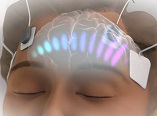Evaluating the Safety of Electroconvulsive Shock and Duloxetine Combination Therapy on Behavioral, Cardiovascular, and Brain Oxidative Stress Markers in the Mice
DOI:
https://doi.org/10.31661/gmj.v10i.2218Keywords:
Electroconvulsive Therapy, Duloxetine, Depression, Major Depressive Disorder, Oxidative StressAbstract
Background: Electroconvulsive Therapy (ECT) as a well-established and effective therapeutic approach for the treatment of various psychiatric disorders is an excellent option to treat the major depressive disorder (MDD). The goal of this experimental study was to determine the possible sides effects of electroconvulsive shock (ECS) and duloxetine, a serotonin-norepinephrine Reuptake Inhibitors (SNRIs), and evaluate the safety of this therapeutic approach on behavioral factors, cardiovascular function, and brain oxidative stress markers on mice. Materials and Methods: Animals were divided into different groups receiving either ECS or different doses (10, 20, 40, 80, or 120 mg) of duloxetine alone or together. We evaluated the behavioral factors associated with administration of ECS with or without duloxetine. In addition, we monitored the ECGs (electrocardiogram) of animals prior to and after the experiment and also evaluated the oxidative stress markers including TAC, MDA, and GSH mice’s brains. Results: We did not detect any significant differences in terms of heart rate, RR interval, PR interval, QT, or corrected QT (QTc) between groups that received different doses of duloxetine in combination with ECS compare to the control group. Our findings suggest that while administration of ECS solely increased the oxidative stress markers and decreased the antioxidant capacity of the brain, a combination of duloxetine and ECS at certain doses alleviates the oxidative stress condition and increases the antioxidant capacity of the brain. Conclusion: Overall, this study suggests that the combination of ECS and duloxetine is safe and considerable for further studies on human subjects.
References
Disease GBD, Injury I, Prevalence C. Global, regional, and national incidence, prevalence, and years lived with disability for 354 diseases and injuries for 195 countries and territories, 1990-2017: a systematic analysis for the Global Burden of Disease Study 2017. Lancet. 2018;392(10159):1789-858. https://doi.org/10.1016/S0140-6736(18)32279-7 First MB. Diagnostic and statistical manual of mental disorders, 5th edition, and clinical utility. J Nerv Ment Dis. 2013;201(9):727-9. https://doi.org/10.1097/NMD.0b013e3182a2168aPMid:23995026 Sanghani SN, Petrides G, Kellner CH. Electroconvulsive therapy (ECT) in schizophrenia: a review of recent literature. Curr Opin Psychiatry. 2018;31(3):213-22. https://doi.org/10.1097/YCO.0000000000000418PMid:29528902 Olesen MV, Wörtwein G, Folke J, Pakkenberg B. Electroconvulsive stimulation results in longâ€term survival of newly generated hippocampal neurons in rats. Hippocampus. 2017;27(1):52-60. https://doi.org/10.1002/hipo.22670PMid:27756104 Depression in adults: recognition and management. National Institute for Health and Care Excellence: Clinical Guidelines. London2009. Kellner CH, Greenberg RM, Murrough JW, Bryson EO, Briggs MC, Pasculli RM. ECT in treatment-resistant depression. Am J Psychiatry. 2012;169(12):1238-44. https://doi.org/10.1176/appi.ajp.2012.12050648PMid:23212054 Borowicz KK, GoÅ‚yska D, Luszczki JJ, Czuczwar SJ. Effect of acutely and chronically administered venlafaxine on the anticonvulsant action of classical antiepileptic drugs in the mouse maximal electroshock model. Eur J Pharmacol. 2011;670(1):114-20. https://doi.org/10.1016/j.ejphar.2011.08.042PMid:21925161 Pitchot W, SCANTAMBURLO G, Ansseau M. Duloxetine in major depressed patients resistant to SSRI and/or venlafaxine. Psychiatr Danub. 2010;22(1): 106-7. https://doi.org/10.1016/j.eurpsy.2007.01.810 Eraslan D, Genc Y, Odabasioglu G, Ergun BM, Ozturk O. Safety of electroconvulsive therapy-duloxetine combination. J ECT. 2011;27(3): 51-2. https://doi.org/10.1097/YCT.0b013e318212eca2PMid:21865952 Dilbaz N, Sengül C, Okay T, Bayam G, Türkoglu A. The combined treatment of venlafaxine and ECT in treatment-resistant depressive patients. Int J Psychiatry Clin Pract. 2005;9(1):55-9. https://doi.org/10.1080/13651500510018202PMid:24945339 Gonzalez-Pinto A, Gutierrez M, Gonzalez N, Elizagarate E, Perez de Heredia JL, Mico JA. Efficacy and safety of venlafaxine-ECT combination in treatment-resistant depression. J Neuropsychiatry Clin Neurosci. 2002;14(2):206-9. https://doi.org/10.1176/jnp.14.2.206PMid:11983797 Vollmayr B, Henn FA. Stress models of depression. Clinical Neuroscience Research. 2003;3(4-5):245-51. https://doi.org/10.1016/S1566-2772(03)00086-0 Fling JL. Technical considerations of an electroconvulsive therapy apparatus. Multiple-Monitored Electroconvulsive Therapy: CRC Press. 2019;41-55. https://doi.org/10.1201/9780429279966-3 https://www.wma.net/policies-post/wma-statement-on-animal-use-in-biomedical-research/ Pinna M, Manchia M, Oppo R, Scano F, Pillai G, Loche AP, et al. Clinical and biological predictors of response to electroconvulsive therapy (ECT): a review. Neurosci Lett. 2018;669: 32-42. https://doi.org/10.1016/j.neulet.2016.10.047PMid:27793702 Belmaker R, Agam G. Major Depressive Disorder. N Engl J Med. 2008;358: 55-68. https://doi.org/10.1056/NEJMra073096PMid:18172175 Takada JY, Solimene MC, da Luz PL, Grupi CJ, Giorgi DM, Rigonatti SP, et al. Assessment of the cardiovascular effects of electroconvulsive therapy in individuals older than 50 years. Braz J Med Biol Res. 2005;38(9):1349-57. https://doi.org/10.1590/S0100-879X2005000900009PMid:16138218 Nomoto K, Suzuki T, Serada K, Oe K, Yoshida T, Yamada S. Effects of landiolol on hemodynamic response and seizure duration during electroconvulsive therapy. J Anesth. 2006;20(3):183-7. https://doi.org/10.1007/s00540-006-0401-1PMid:16897237 Andrade C, Arumugham SS, Thirthalli J. Adverse effects of electroconvulsive therapy. Psychiatric Clinics. 2016;39(3):513-30. https://doi.org/10.1016/j.psc.2016.04.004PMid:27514303 Kranaster L, Janke C, Hausner L, Frölich L, Sartorius A. Venlafaxin-associated post-ictal asystole during electroconvulsive therapy. Pharmacopsychiatry. 2012;45(03):122-4. https://doi.org/10.1055/s-0031-1291349PMid:22086742 Ambhore A, Teo S-G, Omar ARB, Poh K-K. ECG series. Importance of QT interval in clinical practice. Singapore Med J. 2014;55(12):607. https://doi.org/10.11622/smedj.2014172PMid:25630313 PMCid:PMC4291996 Cumurcu BE, Ozyurt H, Etikan I, Demir S, Karlidag R. Total antioxidant capacity and total oxidant status in patients with major depression: impact of antidepressant treatment. Psychiatry Clin Neurosc. 2009;63(5):639-45. https://doi.org/10.1111/j.1440-1819.2009.02004.xPMid:19674383 An X, Shi X. Effects of electroconvulsive shock on neuro-immune responses: Does neuro-damage occur?. Psychiatry Res. 2020;292:113289. https://doi.org/10.1016/j.psychres.2020.113289PMid:32702550 Gonçalves CL, Abelaira HM, Rosa T, de Moura AB, Veron DC, Borba LA, et al. Ketamine treatment protects against oxidative damage and the immunological response induced by electroconvulsive therapy. Pharmacol Rep. 2021;73(2):525-35. https://doi.org/10.1007/s43440-020-00200-4PMid:33393059 Samarghandian S, Azimi-Nezhad M, Borji A, Samini M, Farkhondeh T. Protective effects of carnosol against oxidative stress induced brain damage by chronic stress in rats. BMC Complement Altern Med. 2017;17(1):1-7. https://doi.org/10.1186/s12906-017-1753-9PMid:28472953 PMCid:PMC5418810 Zahedi E, Sanaie Rad A, Khalili M, Esmail Jamaat E, Salari S. The effect of electroconvulsive therapy on the levels of oxidative stress factors in the prefrontal cortex of depressed rats. Journal of Basic and Clinical Pathophysiology. 2018;6(2):27-31. Nieoczym D, Albera E, Kankofer M, Wlaz P. Maximal electroshock induces changes in some markers of oxidative stress in mice. J Neural Transm (Vienna). 2008;115(1):19-25. https://doi.org/10.1007/s00702-007-0805-6PMid:17728996 Lee TK, Park JH, Ahn JH, Shin MC, Cho JH, Bae EJ, et al. Pretreated duloxetine protects hippocampal CA1 pyramidal neurons from ischemia-reperfusion injury through decreases of glial activation and oxidative stress. J Neurol Sci. 2016;370: 229-36. https://doi.org/10.1016/j.jns.2016.09.059PMid:27772765








